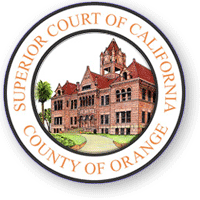2/28/2005
Costa Mesa, CA Red Light Camera DecisionText of the California Superior Court appeals decision on the need to give 30-day notice for each intersection using cameras:

Here is the full text of an Orange County, California Superior Court appeals ruling that the city of Costa Mesa violated the state vehicle code by failing to provide 30 days notice for all of the intersections using red light cameras and for allowing a separate agency to control and set signal timing.
Article Excerpt:APPELLATE DIVISION
SUPERIOR COURT OF CALIFORNIA, COUNTY OF ORANGE
FILED: JAN. 31, 2005
CASE NO. AP-14168
THE PEOPLE OF THE STATE OF CALIFORNIA
Plaintiff and Respondent,
vs.
[[ ]] FISCHETTI
Defendant and Appellant.
JUDGMENT ON APPEAL from the
SUPERIOR COURT of ORANGE COUNTY
HARBOR JUSTICE CENTER
HON. MARK J. SHEEDY, COMMISSIONER
Vehicle Code Section 21455 (c) [[21455.5 (c)]] requires that "a" single governmental agency, such as respondent City, undertake "all" the listed activities comprising operation of an automated enforcement system. However, the evidence in this case is undisputed that the signal phasing "and the timing thereof" at the intersection in question was controlled not by respondent City as required by Section 21455.5(c) (2) (E), but rather by Caltrans. (Settled statement at 2:4-6.) Respondent's reliance on Section 21455.5(d) is misplaced, since that provision only applies where operation of the system has been "contracted out" and "the governmental agency" maintains overall control and supervision - the record does not indicate any contractual agreement between respondent City and Caltrans with regard to the system, and respondent's own evidence shows that overall control of the intersection resided with CalTrans.
In addition, reversal is warranted based upon respondent's failure to implement a 30-day grace period. (Settled statement at 2:3.) Respondent's construction of Section 21455.5(b) appears to be inconsistent with the structure and purpose of Section 21455.5 as a whole. Because Section 21455.5(a) provides that "the intersection" may be equipped with an automated enforcement system, "automated enforcement system" in Section 21455.5(b) cannot refer to a municipality's overall automated enforcement plan, but must instead refer to each individual automated system operated at an intersection within the municipal jurisdiction. Nor would it make sense, from the perspective of the motorists for whom the statutory requirements were intended to provide protection, for the geographic scope of the 30-day grace period to depend arbitrarily upon the size of each municipal jurisdiction. Tellingly, respondent itself offers legislative history of a proposed 2003 amendment to Section 21455.5 (SB 780) which would have expressly provided for the grace period "during the first 30 days after the first recording unit is installed" - the omission of this language from the amendments enacted in 2003 must be viewed not as an intention to adopt the omitted language, as respondent asserts, but rather as legislative rejection of a link between the grace period and the installation of the municipality's first automated enforcement system.
Respondent's request for judicial notice is granted as to Exhibits A, B and D. The judgment is reversed, with direction that the charge be dismissed.
CHARLES MARGINES, Judge


